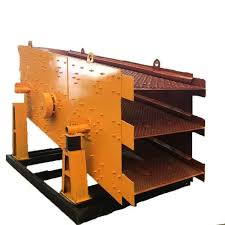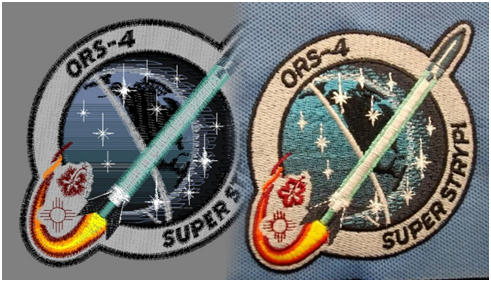Introduction
The Linear Vibrating Screen is a highly efficient and versatile screening machine widely used in various industries for the separation and classification of materials. Its linear motion and simple design make it an essential tool for handling bulk materials and ensuring precise and reliable screening. This article delves into the features, benefits, and applications of the linear vibrating screen.
What is a Linear Vibrating Screen?
A linear vibrating screen operates on a linear motion principle, where the screen moves back and forth in a straight line to separate materials based on size. This motion is generated by vibrating motors or eccentric weights attached to the screen. The linear vibrating screen is designed to handle a wide range of materials, including powders, granules, and liquids.
Key Features of Linear Vibrating Screens
- Linear Motion:
- Description: The screen deck moves in a straight line.
- Function: This motion ensures efficient material transportation and separation across the screen surface.
- Dual Motor System:
- Description: Equipped with two vibrating motors or exciters.
- Function: Creates a balanced and stable linear motion, enhancing screening efficiency.
- Adjustable Vibration Amplitude:
- Description: Features adjustable settings for vibration amplitude.
- Function: Allows customization of vibration intensity to suit different materials and screening requirements.
- Multiple Screen Decks:
- Description: Available with multiple deck configurations.
- Function: Facilitates multi-stage separation and classification for improved processing.
- Durable Construction:
- Description: Built with high-quality materials like stainless steel or carbon steel.
- Function: Provides robustness and longevity, even under harsh operating conditions.
- High Screening Efficiency:
- Description: Designed to handle high capacities with effective separation.
- Function: Ensures accurate and reliable classification of materials.
- Customizable Screen Mesh:
- Description: Compatible with various screen mesh sizes and materials.
- Function: Allows for precise control over the screening process to meet specific requirements.
Advantages of Linear Vibrating Screens
- High Screening Efficiency:
- Benefit: Achieves high efficiency in material separation, ensuring precise and reliable results.
- Versatility:
- Benefit: Suitable for a wide range of materials, including powders, granules, and liquids.
- Low Maintenance:
- Benefit: Simple design and robust construction result in lower maintenance requirements and operational costs.
- Adjustable Performance:
- Benefit: Customizable vibration settings and screen configurations allow for tailored performance to suit different applications.
- High Capacity:
- Benefit: Capable of handling large volumes of material efficiently, making it ideal for high-capacity processing.
- Stable Operation:
- Benefit: The linear motion and dual motor system provide stable and consistent performance.
Applications of Linear Vibrating Screens
- Mining and Minerals Processing:
- Application: Used for separating and classifying minerals, ores, and aggregates, enhancing processing efficiency and material quality.
- Chemical Industry:
- Application: Screens and classifies chemical powders and granules, ensuring precise separation and material handling.
- Food Industry:
- Application: Handles the separation and classification of food powders, granules, and other ingredients, maintaining product quality and safety.
- Pharmaceutical Industry:
- Application: Processes pharmaceutical powders and granules, providing accurate separation to meet stringent quality standards.
- Plastic Industry:
- Application: Separates plastic pellets and granules, ensuring uniformity in plastic production processes.
- Recycling:
- Application: Used for sorting and classifying recyclable materials such as metals, plastics, and paper, supporting efficient recycling operations.
Selecting the Right Linear Vibrating Screen
When choosing a linear vibrating screen, consider the following factors:
- Material Characteristics:
- Consideration: Evaluate the properties of the material, including particle size, density, and flow behavior.
- Screen Size and Capacity:
- Consideration: Determine the required screen size and processing capacity based on material volume and separation needs.
- Deck Configuration:
- Consideration: Choose the number of decks and mesh sizes based on the specific application and material requirements.
- Adjustability:
- Consideration: Look for features that allow for adjustment of vibration amplitude and direction to optimize performance.
- Durability:
- Consideration: Ensure the screen is made from high-quality, durable materials to withstand operational stresses and provide long-term reliability.
- Cost and Value:
- Consideration: Evaluate the cost relative to the features, performance, and potential return on investment.
Maintenance and Care
To maintain optimal performance of a linear vibrating screen:
- Regular Inspections:
- Action: Inspect the screen mesh, vibrating motors, and other components for signs of wear or damage.
- Cleaning:
- Action: Clean the screen deck and other parts regularly to prevent material buildup and maintain efficient operation.
- Lubrication:
- Action: Lubricate moving parts and bearings as needed to reduce friction and wear.
- Adjustment and Calibration:
- Action: Periodically adjust vibration settings and screen configurations to ensure peak performance.
- Operator Training:
- Action: Train operators on proper handling, maintenance, and troubleshooting to ensure effective use and longevity.
Future Trends in Linear Vibrating Screens
- Technological Innovations:
- Trend: Integration of advanced technologies such as automation, real-time monitoring, and predictive maintenance for improved efficiency and performance.
- Customization:
- Trend: Increasing demand for customizable solutions tailored to specific industry needs and material characteristics.
- Energy Efficiency:
- Trend: Development of energy-efficient designs to reduce operational costs and environmental impact.
- Sustainability:
- Trend: Focus on sustainable manufacturing practices and materials to meet environmental regulations and corporate sustainability goals.
- Enhanced User Experience:
- Trend: Innovations aimed at improving user interfaces and control systems for better ease of use and maintenance.
- Integration with Industry 4.0:
- Trend: Adoption of Industry 4.0 technologies for enhanced integration, automation, and data analytics.
Conclusion
The linear vibrating screen is an effective and versatile solution for material separation and classification, offering high efficiency, reliability, and low maintenance. By understanding its features, benefits, and applications, businesses can make informed decisions when selecting this equipment. As technology advances, linear vibrating screens will continue to evolve, providing improved performance and customization options. Partnering with a reputable manufacturer ensures access to high-quality equipment and support, contributing to optimized material processing and operational success.







